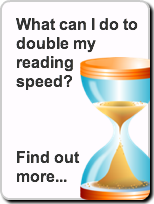In my last two posts I showed you how you can tackle the Introduction and Summary sections of a report.
Communicado: Business Communications Blog
Robert Good
Recent Posts
Topics: Report Writing, Communication skills
When you are writing a report summary, in effect you are creating a cheat-sheet for your reader. As such, the summary needs to be a short, complete and accurate account of what you have already written in the main body of your report.
Incidentally, if you have not yet started to write the report, writing the summary can be a great way of deciding what to include and how to structure it.
Topics: Report Writing, Communication skills
Writing a report introduction can be a surprisingly tricky affair – deciding what to include and what to leave out inevitably means editing down your perfectly-formed report: a report that you would ideally like the reader to sit down and take the time to read carefully and thoroughly!
So here are some practical tips to get you on the right track and help focus your reader on the important stuff from the outset.
When you are writing a report introduction, make it directly relevant to your reader. For example, imagine there is a small change in regulations that affect your organisation. Often in this situation, a report will be circulated to everybody for information. A typical introduction to such a report might start like this:
“This report sets out the changes to the XYZ regulations (sections 3 and 5). The regulations come into effect on June 1st. A copy of the changes will be filed in our procedures manual.”
Unless your reader has plenty of time to spare, this might end up unread. Instead, you need to get their attention:
“We will be directly impacted by small but important changes to the XYZ regulations that come into effect on June 1st.”
Notice that the detail – that is, sections 3 and 5 – were omitted: keep focussed on the main message. You can then tell your reader what the report contains:
“Page 1 describes the changes in detail and includes a quick summary; Page 2 sets out the new end-of-day procedure that will be implemented to ensure that we remain compliant.”
Finally, a call to action rounds off the introduction nicely. Tell your reader what they now need to do:
Topics: Report Writing, Communication skills
One of my favourite comedy sketches is “Numberwang” from “That Mitchell and Webb Look”. Numberwang (in case you didn’t know…) is a spoof gameshow in which contestants call out numbers – seemingly at random – until the host declares “That’s Numberwang!”. OK, I know I may not have quite sold it to you, but somehow Mitchell and Webb manage to make this slight joke into something very funny – have a look on YouTube and see what you think.
Anyway, the reason I mention Numberwang is that I was reminded of it the other day when looking through some documents that I needed to review. I was bombarded by more numbers than a Numberwang show, and it got me thinking about the use and abuse of numbers in the context of writing business reports.
Numbers, like all other information, have to earn their place on the page. Let’s take a few examples. ‘Page 1 of 1’ at the bottom of a document is occasionally useful for audit purposes, but for many short and informal documents, page numbering is just clutter. Likewise, version numbers. ‘Draft 1.0’ can so often be either meaningless or misleading. (The whole convention of numbering drafts is a topic in itself. I prefer a first draft to be 0.1 rather than 1.0, but that’s another story…). And try not to number your lists if bullets will do instead: numbering implies a sequence, and nine times out of ten there may actually not be one.
But of course, one of the main ways in which numbers infect documents is through section numbering. Ask yourself if you really do need to number your sections? Will a sharp section title do instead? Maybe a number will help if you need to refer to the document in discussions and reviews, but not all documents are used in this way. And don’t forget that numbering can seriously interrupt the way a document flows: ‘Section 4.3.2’ is a fairly forbidding start to a piece of text.
The cardinal sin (if you will excuse the pun), however, is to use numbered sections to send your reader off on a wild goose chase. ‘See Section 6.1.3 for more details’ suggests to me that there is something wrong: why aren’t the relevant details here, at this point in the text where they are needed? And flicking backwards and forwards to Diagram 3 in Appendix 5.2 (which is no doubt also full of lengthy tables and small print) isn’t much fun either. Now that’s what I’d call Numberwang.
Topics: Report Writing, Communication skills
When I was a child my mother always used to tell me to “mind my P’s and Q’s”. I’m still not entirely sure what she meant, but I think it was along the lines of “don’t forget to say ‘Please’ and ‘Thank You’ or you’ll get a clip round the ear”. Certainly, I found out that if I didn’t remember to write a thank you letter to relatives after a birthday, the prospects for a present the following year were severely jeopardised.
Things don’t seem to be quite so straightforward in business writing and sometimes we have quite lengthy discussions about whether it is good practice to say ‘Please’.
Some people are adamant: they never say please in an email or memo, as it simply gets in the way and dilutes the message. Others find this too abrupt; rude, even. These latter folk are the natural people pleasers, who argue that no harm can be done by simple manners. And good manners help to oil the works, don’t they? This can be a tricky debate to resolve, and of course there is no single right answer. Sometimes, it's simply be a matter of personal preference. At other times the company culture dictates your style of writing.
For my money, there is a rule of thumb that might help. I call it the ‘birthday present rule’. Let me explain. Business writing is all about getting your message across clearly and simply. Everybody is busy, and people appreciate receiving communications that are short and to the point. Business writing is not about being nice, it is about being – well, business-like. So I don’t think ‘please’ is essential for everyday communications between colleagues. They already know that you are a nice person – they see or speak to you most days. They will thank you more for being accurate and brief.
However – and here I hope my birthday present analogy will help! – if somebody has gone out of their way to help you, or if you specifically need to maintain good relations with an occasional work associate, then yes, saying please and thank you will undoubtedly help.
Ultimately it's a matter of judgment based on your audience and your message. But I do think that in a business context, clarity is more important than being nice: “P’s and Q’s” can often afford to be the exception rather than the rule. Just don’t tell my mum I said so.
Topics: Report Writing
One of the many nice things about being a trainer is you get to meet people from different walks of life and different businesses. I see people from across the spectrum – banks, pharmaceutical and construction companies; from the police and public services; from insurance and technical companies, plus many more besides. Every delegate has a different tale to tell about how they came to be in the room.
Introducing yourself
Topics: Report Writing









